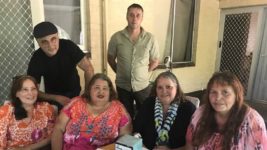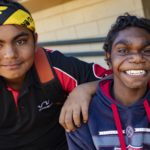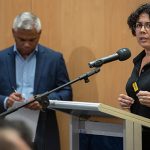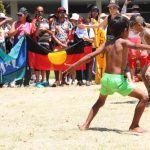The Impact of the First Nations Suicide Crisis Up-Close

Karen West* found her daughter in an agitated state last December and realised she’d taken hundreds of pills. As the 15-year-old girl was so upset, police placed her in the back of a paddy wagon and took her to a hospital in Perth. On arrival, three minutes later, she was unresponsive.
Hospital staff revived the Noongar girl and left her unattended on a bed, where she slipped into a coma. On the following day, Ms West’s daughter was shifted to a children’s hospital, where she was placed on life support and fought for her life for the next eight weeks.
Following her recovery, it became apparent that the girl had attempted to take her life, as she couldn’t cope with the trauma resulting from the sexual abuse she’d suffered at the hands of her mother’s violent ex-partner. Indeed, she didn’t even know how to tell her mother it had happened.
And this young woman’s attempted suicide is not unique. She’s one of many First Nations youths who have found themselves is such a bleak frame of mind that taking their own lives seems like an option, as they find themselves caught in a cycle of poverty, abuse and homelessness.
A light in the darkness
“In the few weeks after my daughter got out of hospital, we were on the streets: sleeping in parks, toilet blocks and pavilions. We had nowhere to go,” Ms West told Sydney Criminal Lawyers. And she added that her family don’t speak to her anymore, as they refuse to believe her daughter’s story.
The 39-year-old mother-of-three had struggled with homelessness for months prior to her daughter’s hospitalisation. And it wasn’t until Gerry Georgatos and Meagan Krakouer from the National Indigenous Critical Response Service stepped in that she secured a place to live.
“If it wasn’t for Gerry and Megan, I don’t know where I would be now,” Ms West stressed. “Their support was day-to-day, even a few times a day. They tried really hard and didn’t give up supporting me along the way.”
Underlying poverty
“First Nations people who are suiciding are predominately living below the poverty line,” Mr Georgatos said over the phone on Tuesday. The suicide prevention advocate has long emphasised the link between poverty and deaths caused by intentional self-harm.
Right now, Australia is in the midst of a First Nations suicide crisis. Over the first half of 2019, 83 Indigenous people have taken their own lives. But, if you look back to the 1980s, suicide amongst Aboriginal and Torres Strait Islander communities was so low, it practically didn’t exist.
Now head of the National Critical Response Trauma Recovery Project, Mr Georgatos pointed out that of the 83 Indigenous people who took their own lives, 80 lived below the poverty line, while the three others lived in proximity to it. And 76 of these people were living in social housing.
Around 25 percent of the First Nations people who have died this year in these circumstances were under the age of 18. And this included two girls as young as 12. Outback communities have the highest suicide rates, while around 75 percent of these self-harm deaths occur in urban centres.
Systemic racism
Rhonda Coyne’s life has recently been struck by tragedy. The Adelaide resident has had two nephews – an Aboriginal man and a non-Indigenous man – take their own lives, over a five day period. And one of these men was only buried on Tuesday.
The 54-year-old Noongar mother-of-four said there’s a desperate feeling of hopeless underlying Indigenous suicides, as well as the broader suicide crisis in this country that claimed the lives of 3,128 Australians last year.
And as far as Ms Coyne’s concerned, until discrimination against First Nations people is brought to an end, the suicides will continue. “It’s that feeling that people can put across when they’re talking to Aboriginal people,” she explained. “We’re still living in a very racist world.”
These people take their lives because they find life so hard to deal with, Ms Coyne continued. “It causes so much grief and pain. The one thing they don’t understand is they might have got rid of the pain, but once they’ve done it, they’ve ricocheted the pain and hopelessness amongst the family.”
More “prudently and practically” applied
“The suicide toll of First Nations people has been higher each year than the preceding year without fail every year of this century,” said Georgatos. And this year began with five Aboriginal girls under 15 taking their own lives over the nine day period ending on 11 January.
The suicide prevention advocate made clear that the government’s continued spending on suicide research is money misspent. He explained that over recent years, around $40 million in funding has been funnelled into research and there’s another $35 million earmarked for more.
“We’ve had 40 reports in the last 15 years. High-level reports with 700 recommendations, which can be nutshelled into about 15 unique recommendations,” Mr Georgatos outlined. “It’s rebadged and rebadged and it’s a forever seen to be doing something.”
According to Georgatos, the suicide rate can be reduced. And to bring this about what needs to happen is that money being spend on research should be put towards “services that work at the coalface”: that’s where he’s been operating and that’s where he’s seen suicides prevented.
A lack on the ground
Sharon Hume’s son took his own life last year. The 33-year-old man had dealt with ongoing trauma since he suffered a gunshot wound at the age of 19. He was experiencing long-term unemployment at the time of his death, and his family were struggling financially.
“It has been an option because people are not getting the help they need. People are looking for help and struggling to get it,” Ms Hume said. “There’s not enough services and people are too scared to talk about their problems.”
The Tjuparn woman added that she was lucky as Mr Georgatos stepped in to help her family following the loss of her son. His organisation supported her with counselling, food vouchers, as well as assistance in organising the funeral.
And as for the government, Ms Hume said it needs to recognise that suicide deaths are on the rise amongst First Nations communities. “It has to start putting more funding into these areas and help those people who are working in those areas to provide more services,” she concluded.
The photo features Sharon Hume on the left with Gerry Georgatos by her side. Ms Hume’s sisters, Barbara, Jillian and Rosemary, are also featured, along with independent filmmaker Alex Hayes in the background.
* Not her real name







